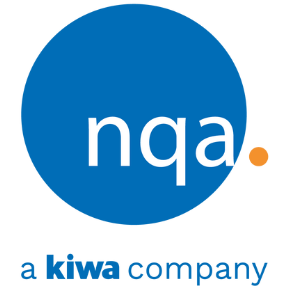УПРАВЛЕНИЕ НА КАЧЕСТВОТО
Confused by continual improvement vs. continuous improvement? Corrective actions vs. preventive action?
Find these answers and more in our glossary of quality management systems terms and definitions.
If you have any questions or would like a definition added, please let us know.
QUALITY MANAGEMENT SYSTEMS TERMS AND DEFINITIONS
-
ISO 9001:2015. The international standard for Quality Management Systems (QMS), provides a robust management system framework to help organizations realize and take advantage of operational efficiencies and improvements to the quality of product/service it may deliver. ISO 9001 comprises of different elements that are necessary for creating an efficient and effective QMS. These elements include:
- Programs
- Procedures
- Practices
- Plans
- Rules
- Roles
- Responsibilities
- Relationships
- Contracts
- Agreements
- Documents
- Records
- Methods
- Tools
- Techniques
- Technologies
- Resources
-
ISO 9001:2008. This version of the International Standard for Quality Management used the word ‘Product’ to refer to all output categories, whereas the 2015 version uses the term ‘products and services’. The standard specifies a requirement for documented information that is not included in the 2015 version of the standard. This version does not adopt the Annex SL high level structure, and is therefore less easy to integrate with other ISO management system standards.
-
ISO 9000:2015. Explains the principles of quality management that the international standard is based upon.
-
ISO 9004:2009. This document assists organizations in assessing the maturity of its’ quality management system and can be used to help them progress beyond the requirements of ISO 9001.
-
Quality. This term applies to objects and any entity that is conceivable or perceivable and denotes the level to which a set of inherent characteristics fulfils a set of requirements. Inherent characteristic that describes a feature that exists in an object. You can determine the quality of an object by comparing a set of inherent characteristics against a set of requirements. An object that has characteristics that meets all of the requirements has high or excellent quality. If the characteristics fail to meet all requirements, the object has a low or poor quality.
-
Quality Management System (QMS). A framework that supports the systematic review of operational processes, policies and procedures deployed by an organization to meet its purpose.
-
Quality Manual. This provides a practical way to comply with the ISO 9001. It is mandatory for compliance to ISO 9001:2008 but not a requirement for ISO 9001:2015. For a quality manual to align with ISO 9001:2008 requirements it would include the scope of the management system, and reference or include documented procedures. It would also describe the interaction between organizational processes and the management system.
-
Quality Management Policy. This document should include a commitment from top management to satisfy standard requirements and continue the improvement of its quality management system. The content including objectives that align tot eh purpose of the business, should be established, put in place and maintained by top management.
-
Competence. This term refers to the possession of the knowledge and skills to achieve the desired results, as well as understanding how to apply them. For example, you are competent to do a particular job.
-
Concession. The concession is a special approval granted to an organization which releases a nonconforming product or service for use or delivery. Typically, concessions are restricted to specific uses and are limited by type and quantity. The concession usually specifies that nonconforming characteristics may not breach the specified limitations.
-
Conformity. This terms means the organization complies with the requirement — a need, expectation or obligation. The types of requirements include:
- Quality management requirements
- Quality requirements
- Customer requirements
- Management requirements
- Product requirements
- Service requirements
- Contractual requirements
- Statutory requirements
- Regulatory requirements
-
Continual / continuous improvement. ISO 9001 requires the continual improvement of the quality management system, which is defined as recurring activity to enhance performance. Continual and continuous imply a trajectory – continual is analogous to a staircase and continuous a ramp.
-
Corrective action. Action to eliminate the cause of a nonconformity and to prevent recurrence. This is action taken after the fact of non-conformity.
-
Preventive action. Proactive action taken to eliminate the cause of potential non-conformity. The act of establishing, implementing and improving a quality management system is deemed to be preventive action in and of itself.
-
Defect. This term describes a type of nonconformity that occurs when a product or service fails to meet the intended use or specified requirements (see nonconformity).
-
Documented information. This is information that must be controlled and maintained. It includes information about the quality management system and related processes. It also encompasses information the organization requires for operation and the documentation of the results they achieve. Documented information can come from any source and be in any format including, print, electronic, photograph or master sample.
-
Performance. The performance indicates measurable results that an organization achieves through its activities, processes, products, services and systems. An organization that “performs well” achieves acceptable results. One that “performs poorly” achieves unacceptable results.
-
Traceability. Traceability concerns an organization’s ability to identify and trace the history, distribution and location of a product, as well as the application of products, components, materials and services. An effective traceability system records and follows the products, parts, materials and services that come from suppliers and processes and are distributed as final products and services.
-
Validation. The validation process utilizes impartial evidence to verify the requirements and record whether an intended use or application has been met. A validated status means that all requirements have been met. Organizations can perform validation under realistic conditions or within a simulated environment. Viable approaches to validation include testing, executing alternative calculations or reviewing documents before issuing them.
